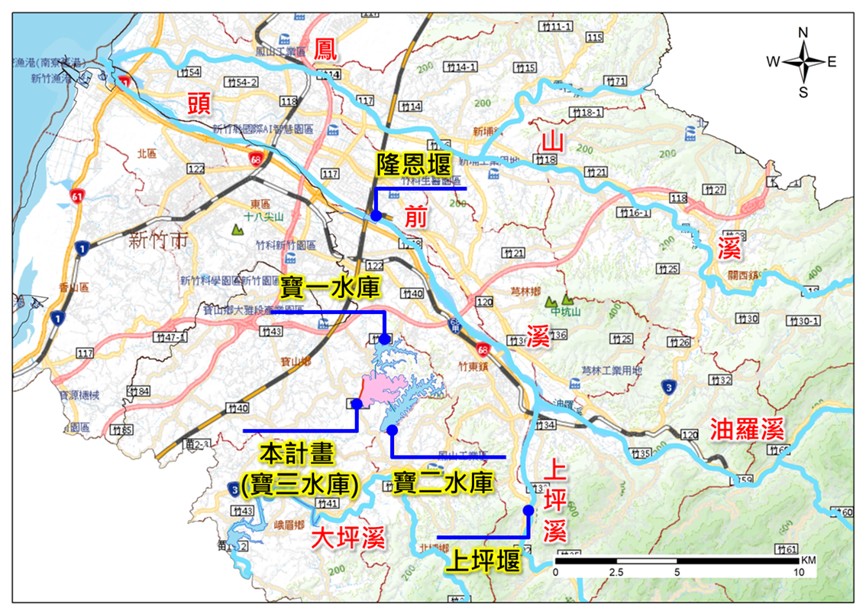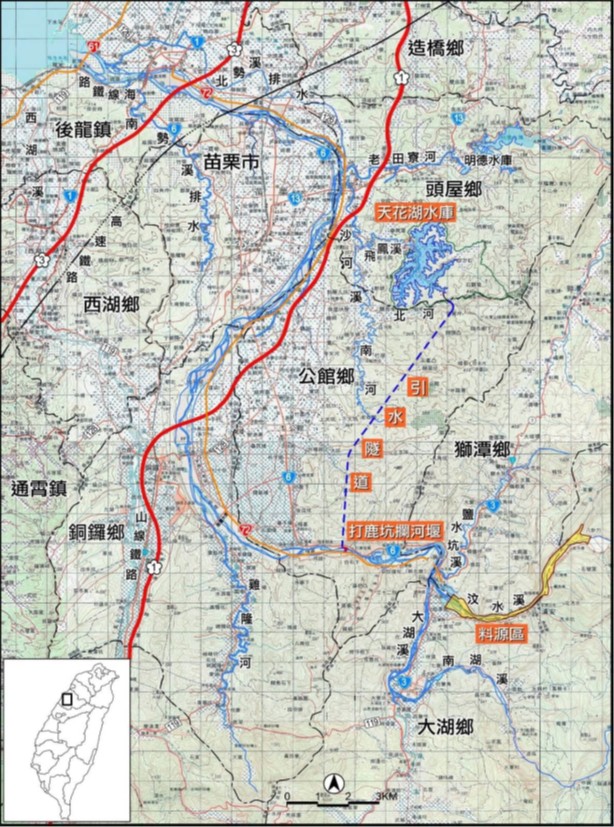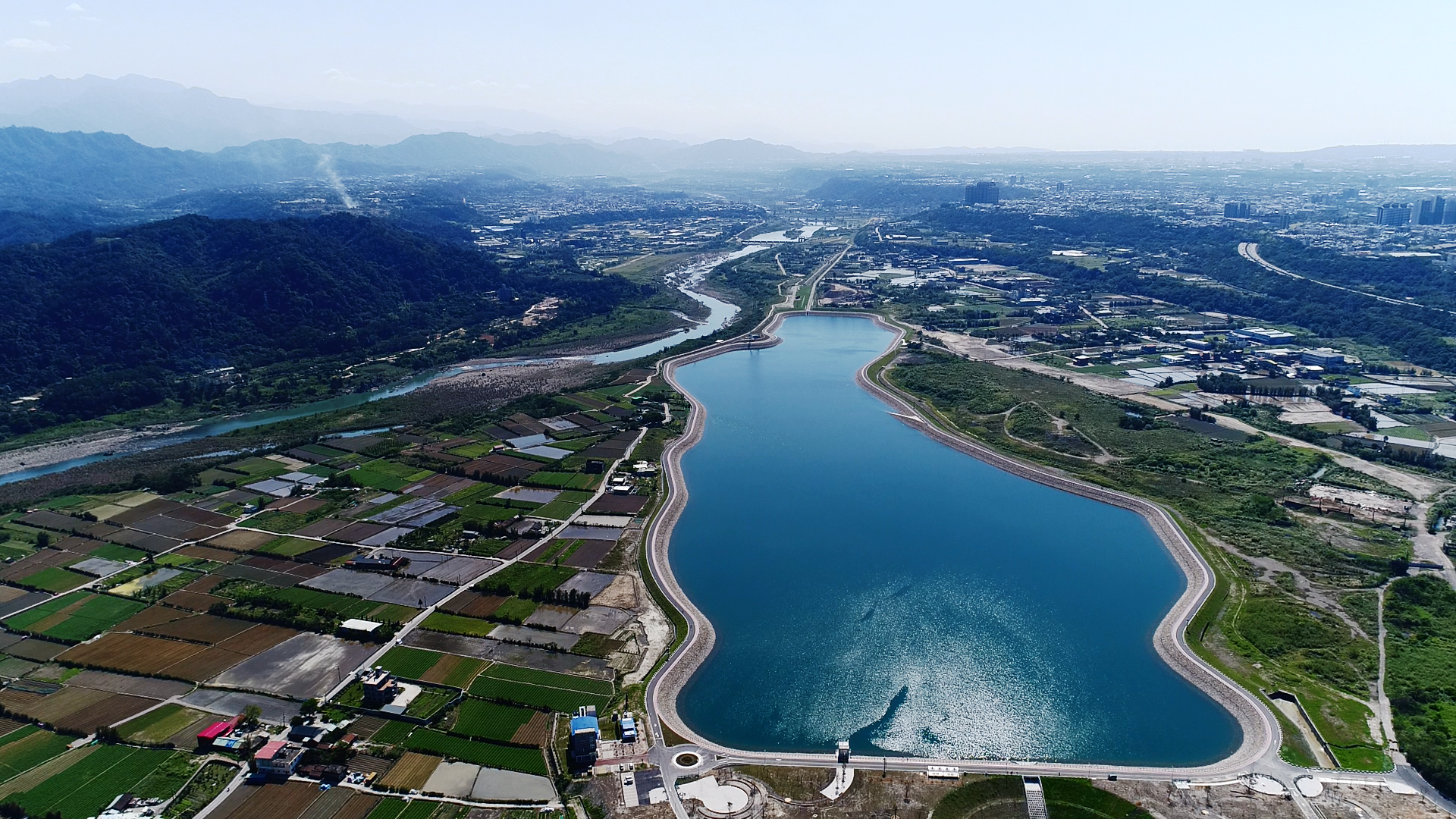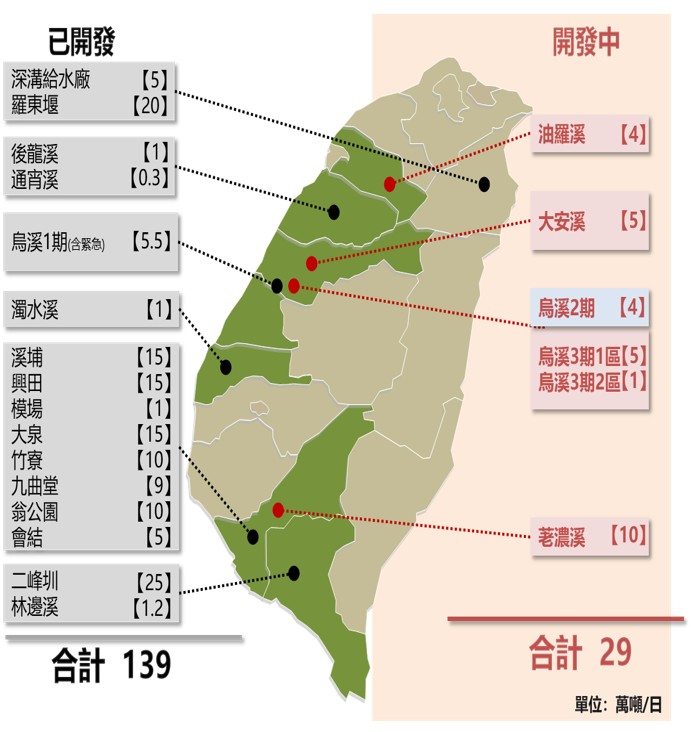Water resources constitute a fundamental basis for national economic development, directly impacting public safety and quality of life. In facing the challenges of climate change, the importance of traditional reservoir development in ensuring stable regional water supply remains irreplaceable. However, with the growing emphasis on ecological conservation in recent years, the construction of large-scale reservoirs has become increasingly difficult, given the lengthy processes required—from planning, environmental impact assessment, and land acquisition to completion and water supply—which may take decades. Accordingly, in coordination with the Water Resources Agency, this Branch is promoting diversified water resources development by advancing medium- and small-scale projects that are more broadly accepted by the public. In addition to the planning of medium- and small-scale reservoirs, efforts are being directed toward multiple alternative sources, such as off-channel artificial lakes and bank filtration projects, which offer greater feasibility for completion within a shorter timeframe.
1. Promoting Medium- and Small-Scale Reservoirs to Enhance Regional Water Supply Reliability
Due to rapid industrial development, the Taoyuan and Hsinchu areas are experiencing continuously increasing water demand, and they often face the need for water allocation during dry seasons by utilizing irrigation water sources from Taoyuan, Shimen, and the Hsinchu Irrigation Associations. On February 22, 2024, the National Development Council, at the 3,893rd Executive Yuan meeting, presented the “Taoyuan-Hsinchu-Miaoli Silicon Valley Development Plan.” This initiative seeks to leverage the region’s comprehensive technology industry chain, the logistics advantages of Taoyuan International Airport, and strong academic and R&D capacity, while integrating local industrial technologies, innovation capabilities, and industrial parks across Taoyuan, Hsinchu, and Miaoli. The plan aims to establish a globally leading industrial ecosystem, with an estimated additional output value of NT$6 trillion and the creation of approximately 140,000 new jobs.
To meet the additional domestic and industrial water demand generated by this development plan, this Branch has proposed the construction of the Third Baoshan Reservoir (Fig. 1) and the Tien-Hwa-Hu Reservoir (see Fig. 2). These projects are intended to strengthen self-sufficiency in water resources for Hsinchu and Miaoli, reduce supply risks, and effectively address the challenges of climate change as well as the region’s future growth in water demand.

Fig. 1 Location Map of the Third Baoshan Reservoir Project

Fig. 2 Location Map of the Tien-Hwa-Hu Reservoir Project
Promoting Artificial Lakes on Plains to Enhance Water Resource Utilization Efficiency
Due to Taiwan’s steep terrain and rapid river runoff, rainfall quickly flows into the sea, making it difficult to store water. The development of artificial lakes on plains can enhance the efficiency of water resource utilization. For example, the Zhongzhuang Regulation Pond in Taoyuan, completed in 2017 (Fig. 3), provides an emergency backup water source for the Shimen Reservoir during typhoon and flood periods when raw water turbidity increases. In 2024, the Niaozuitan Artificial Lake on the Wu River was completed (Fig. 4). The additional water supply from this project reduces groundwater extraction in the Changhua area while also mitigating land subsidence. Similarly, public river land has been utilized to construct the Touqian River floodplain storage pond to strengthen backup water supplies for agricultural use.This Branch continues to evaluate and plan potential sites for artificial lake development across various regions. Preliminary studies have been conducted on artificial lakes in the Taoyuan-Hsinchu-Miaoli area to address the anticipated increase in domestic and industrial water demand resulting from the Taoyuan-Hsinchu-Miaoli Silicon Valley Plan. Different implementation scenarios are being assessed for feasibility to strengthen and stabilize regional water resource supply resilience. In addition, the Branch has planned the Gongliao Adjustment Reservoir in the Shuangxi River Basin to augment the Taiwan Water Corporation’s Gongliao system. During wet seasons, water diverted from the existing Gongliao Weir on the Shuangxi River will be stored in the regulation pond, thereby enhancing the joint allocation capacity among Keelung’s water supply systems, alleviating pressure on the Xinshan Reservoir, and simultaneously supporting recreation and ecological conservation. This achieves the objective of developing diversified new water sources.

Fig. 3 JhongJhuang Bank-Side Reservoir

Fig.4 Niaozueitan Artificial Lake
3. Promoting Hyporheic Flow to Strengthen Regular and Backup Water Supply Capacity
Extreme heavy rainfall events can cause river raw water turbidity to spike, while prolonged dry periods may lead to droughts, both of which can affect water supply stability. Therefore, it is necessary to enhance the backup capacity of regional water supply systems. Hyporheic flow refers to the shallow subsurface water flowing beneath riverbeds, which offers the advantages of clear water quality and relatively low development costs. In Taiwan, hyporheic flow has been utilized since the Japanese colonial period (e.g., Erfeng Canal in Pingtung). Early hyporheic flow developments also include the Luodong Weir in Yilan, Shengou, and several sites in southern Taiwan along the Gaoping River, such as Jiuqutang, Hueijie, Jhuliao, and Weng gongyuan that hyporheic flow development technology has gradually matured, the Executive Yuan approved the Forward-Looking Infrastructure Development Program in 2017 to implement hyporheic flow projects, including those along the Houlong River, Daan River, Wu River, Linnei Section of the Zhuoshui River, and Singtian, Sipu, and Daquan sections of the Gaoping River. In September 2020, the “Plan to Strengthen Artificial Lakes on Plains and Hyporheic Flow Development” was further approved, initiating additional hyporheic flow projects along the Youluo River, Daan River, Wu River (Phases 2 and 3), and Laonong River. Currently, domestic hyporheic flow development has reached a total of 1.39 million m³/day, with an additional 0.29 million m³/day under construction. Moving forward, suitable sites for hyporheic flow development will continue to be planned based on regional hydrogeological conditions. Site-specific assessments will determine whether the water will be used as a regular or backup source, thereby enhancing water supply resilience (Fig. 5).The future principle for water resource utilization will prioritize surface water (river water) due to its low-cost gravity-fed extraction and rapid availability. When surface water availability declines, hyporheic flow will be immediately utilized to supplement it. Any remaining deficit will be met by reservoir water to satisfy the water demand of each supply target. If reservoir storage is insufficient, backup sources such as drought-resistant wells will be activated accordingly.

Fig.5 Overview of Major Hyporheic Flow Utilization in Taiwan